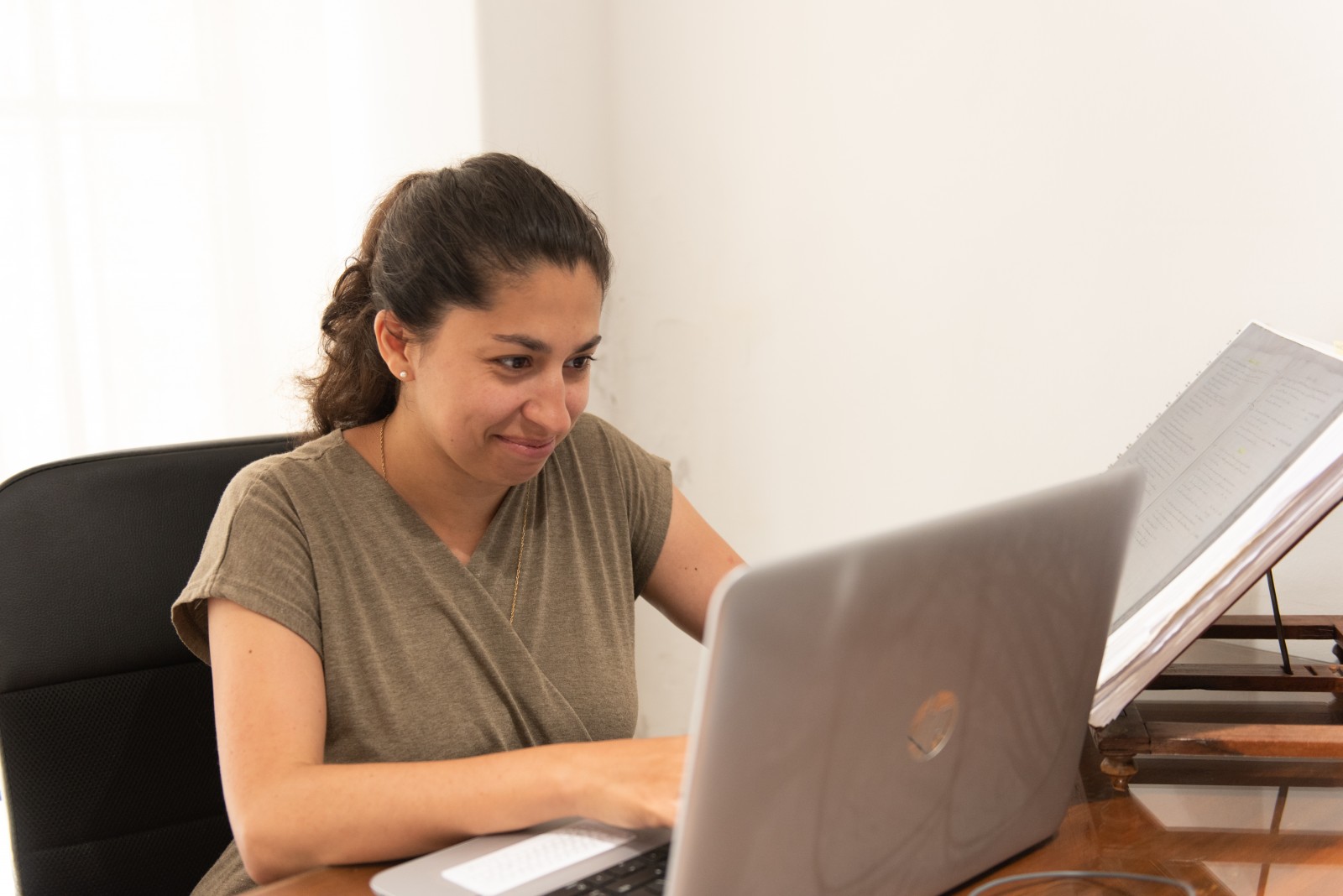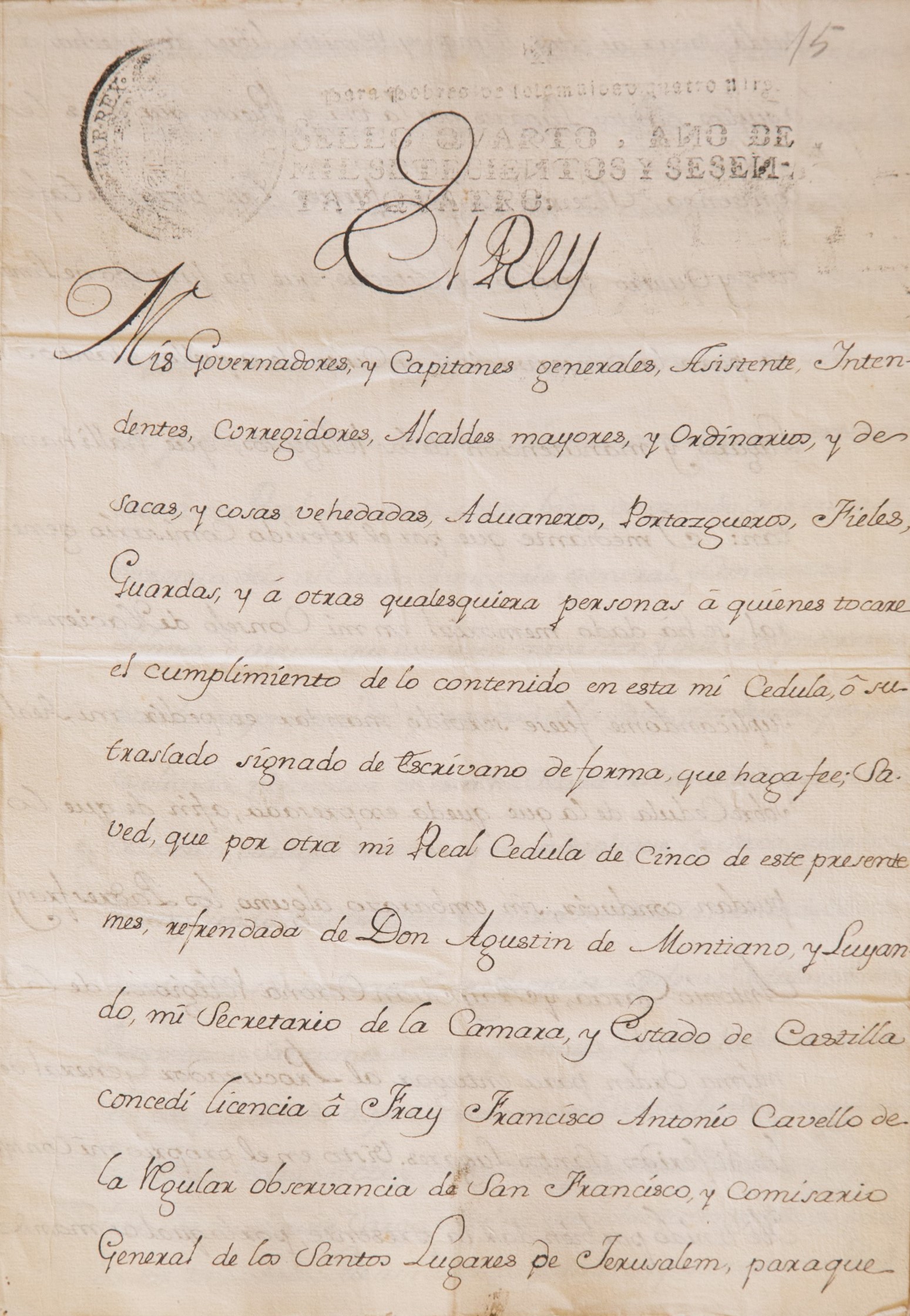The registers of conduits: “A gold mine for tracing the history of the museum’s collections!”

[IT]Sarah Alexandra mentre trascrive i registri delle Condotte. Ph. Nadim Asfour/CTS[/IT] [FR]Sarah Alexandra en transcrivant les registres des Conduits. Ph. Nadim Asfour/CTS[/FR] [EN]Sarah Alexandra while transcribing the registers of the Ducts. Ph. Nadim Asfour/CTS[/EN] [ES]Sarah Alexandra mientras transcribe los registros de las Conductas. Ph. Nadim Asfour/CTS[/ES]
Sarah-Alexandra, art historian and volunteer for the Cultural Heritage Office of the Custody of the Holy Land, frowns in concentration as she focuses on the document she is trying to decipher. “We must decrypt the writing of the Franciscan friars from the 17th century,” she confides with a smile. The young volunteer is working on a valuable project for museum curators and art historians by digitally transcribing the registers of conduits of the Custody of the Holy Land. Indeed, for centuries, Christian nations have regularly sent goods to the Holy Land in order to offer support and assistance to the Franciscan religious in charge of guarding the Holy Places. “The friars have received a wide variety of objects: liturgical objects, paintings, goldware and silverware, precious fabrics, money, but also tuna, food, watches and medicine” Sarah-Alexandra explains.
Upon their arrival in Jerusalem, the destination of their journey, the couriers handed over these objects to the friars who hastened to copy the receipts into entries registers. Still preserved at the Custody of the Holy Land today, these valuable registers make it possible to understand the needs of the Franciscans in their daily lives and to perceive the involvement of Christian nations in their devotion to the Holy Places. “It’s very rare to have kept such documents concerning the daily lives of the friars, not just official or diplomatic records.” After a moment of silence, she continues: “What is extraordinary here is to be immersed in the life of the Custody from 1615 onwards!”. Sixteen books of conduits, written between 1615 and 1980, are still present in the archives of the Custody of the Holy Land. For this reason, Sarah-Alexandra is regularly asked by art historians to trace the origin of certain objects. “These registers serve as IDs for the museum’s collections, they are invaluable for understanding the historical context of a work!” she exclaims.

[FR]Lettre du roi d’Espagne lui-même, jointe à quelques cadeaux pour la Terre Sainte, 1764[/FR][EN]A letter from the King of Spain himself, attached to some gifts for the Holy Land, 1764[/EN][ES]Una carta del propio Rey de España, adjunta a algunos regalos para Tierra Santa, 1764[/ES][IT]Una lettera del Re di Spagna in persona, allegata a dei doni per la Terra Santa, 1764[/IT]
The drafting of these registers follows a similar structure depending on the time period. “First is the geographic origin of the shipment, the date of its arrival in the Holy Land at the port of Acre or at Jaffa in general, the identity of the courier, and a description of the goods.” Sarah-Alexandra pauses, looking around her desk. “For example, in 1653, we can read that ‘a silver lamp from His Majesty Ferdinand III with precious stones worth nearly 1,000 ECUs for the Holy Sepulchre of our Lord’ was brought.” Then comes the name of the donor (the sovereign or his vassals), the signature of the friar who wrote the registers, as well as the signature of another friar to attest to the arrival of the object at the Saint Saviour Monastery in Jerusalem.
However, this apparent logic often leaves room for complications. “One of the challenges I face is being able to decipher the Italian of the time, facing writings that are always different and often inconsistent, unknown Latin abbreviations which are not always in the correct order.” The young woman turns a few pages and adds: “If there was a blank page available, a friar could write on it, even if it was at a latter date! It’s another way of thinking, one not as Western. I think that the Franciscans of the Holy Land have adopted the logic of their country, which goes to show that they are well-integrated into the Holy Land and that their presence there has persisted for 800 years!”



